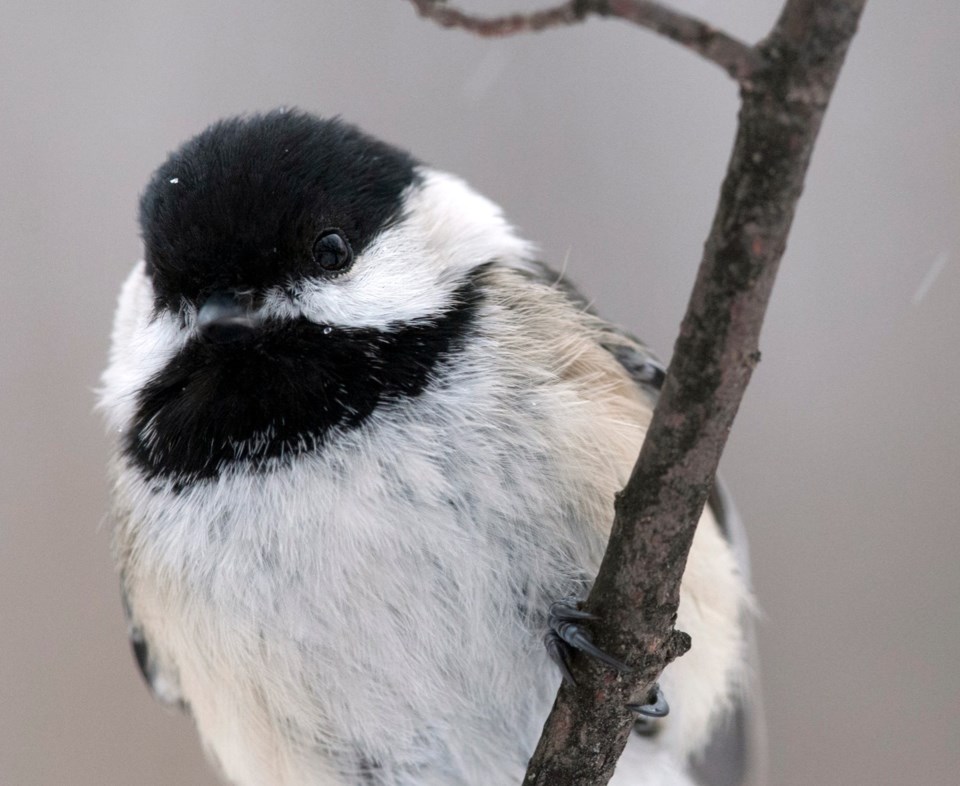So, how's your code? Ma ed id still pugged up, bud at lead ma node had topped running, foe adwhile endyway. Seems everbody I knowd god a sore troat, hed code, or duh flu. Yuck.
In beedween naps I sid by duh winnow wid ma cup o tea and watch duh birds come to duh fedder. Dey like duh sunflower seeds best, as well as duh suet. Mode of duh millet gets throwed away, until duh mourning doves come to clean upduh spillage. Boo jays n yunkos are duh mode popular kinds dat visit our fedder.
For years I av pud out duh seeds for duh birds, tinking dat I was helping dem to survive duh winter.
Oo know duh story, about if oo sart feeding duh birds oo gotta condinue feeding dem or day will all die beause dey hav come do depend on oo for dare food. But duh story now seems to have been false. Seems dat duh birds can ged by preddy well widout us.
Plead edcuse me while I go dake someting to combat dis stuffy hed.
(A half hour later…)
Ah, that's better. One good thing about staying home with a cold is that you can get caught up on some reading.
The Feb/Mar 1991 issue of National Wildlife magazine has a very interesting article about chickadees and how they survive in the winter. According to researcher Margaret C. Brittingham, chickadees are tough little birds which fare quite well on their own.
She discovered that chickadees eat the equivalent of 150 sunflower seeds a day during mild winter temperatures. When the temperature drops to zero degrees Fahrenheit, the birds must then find more than 250 sunflower seeds a day to survive.
The weight of these seeds is about 60 per cent of the bird's body weight. (If you weigh 100 pounds, you would have to eat 60 pounds of food a day to keep pace with a chickadee.)
By studying chickadees, both in habitats that included feeders and those which did not, she found that the survival rate was equal during mild winters. Feeder birds obtained only 20 per cent of their daily intake at the station, the rest of their food being gleaned from Nature, just like the non-feeder birds.
Even when people deliberately withheld seed (how cruel can you get?) the chickadees survived at the same rate as the 'wild' birds.
However, when temperatures did dip low, the feeder bandits usually lasted longer than the bush league. When temperatures dropped to 10 degrees F or lower, these birds doubled their survival rate compared to those eating only food obtained in the wild.
Chickadees are amazing in their rate of metabolism, that process of changing food into fat and energy. Birds caught in the morning had no fat reserves, yet the same bird recaptured later in the day had loads of fat.
Even more amazing is that the chickadee can lower its body heat by 20 degrees F at night; this conserves the fat deposits until morning when energy is needed to resume foraging.
Amazing liddle birds these chickadees. So tiny yedt so complex. One udder point is dat when the temperadures do ged below minus 20 degrees F, duh chickadees stop feeding. Dey just fluff up, sit still and wade for warmer wedder.
Arrgh… I dink dat dis code is indastrucable. So I leave id wid you… "To feed or nod to feed, dat id duh kestion". As foe me, I'm goink to bed.



